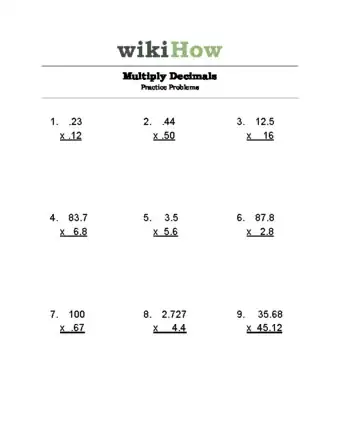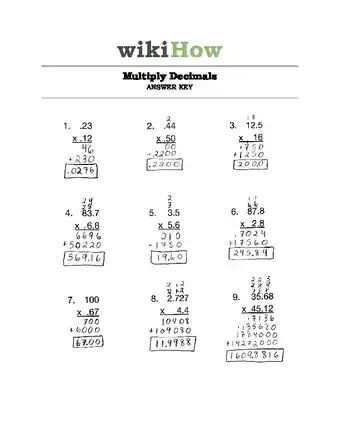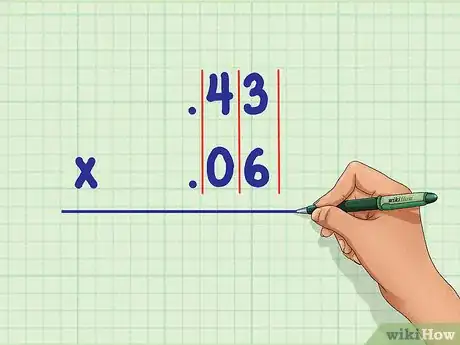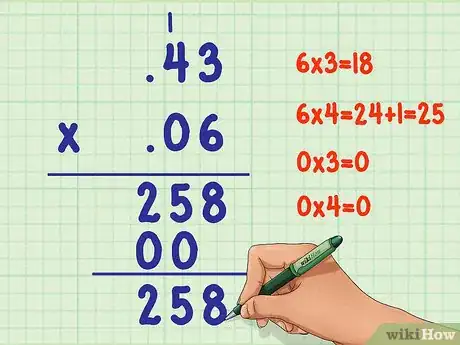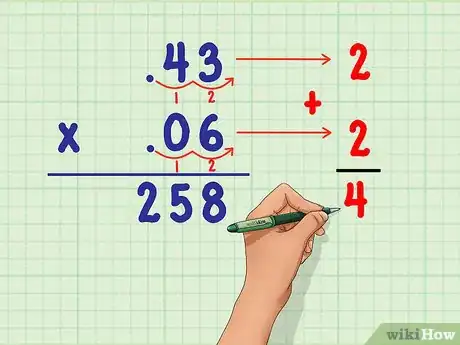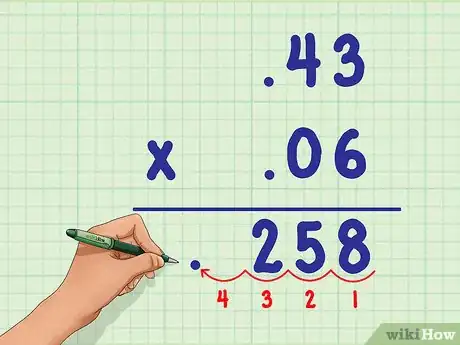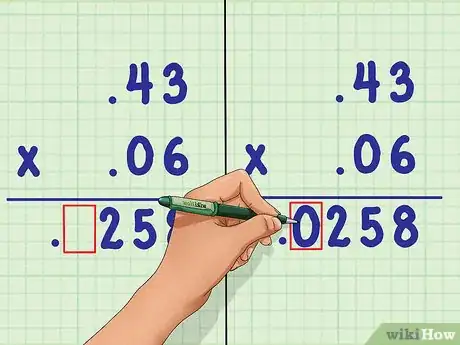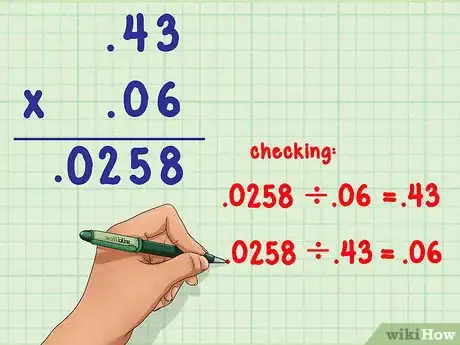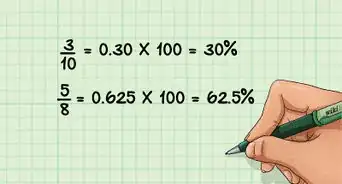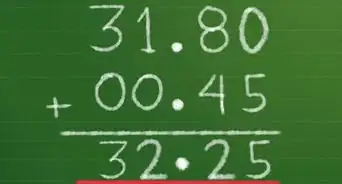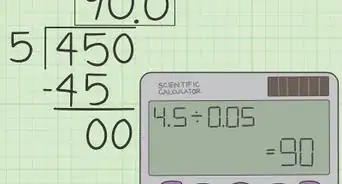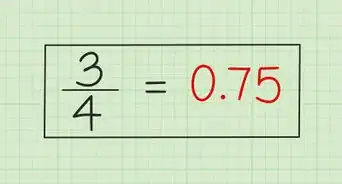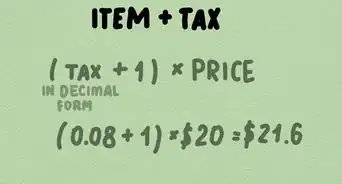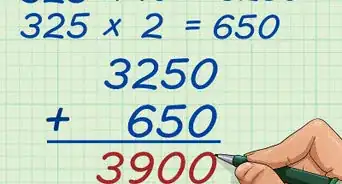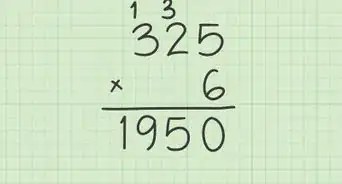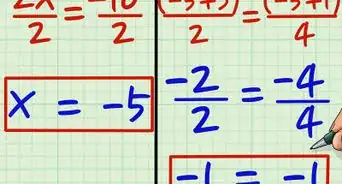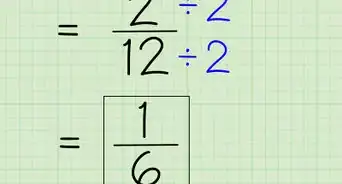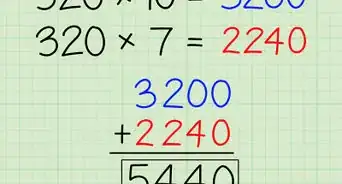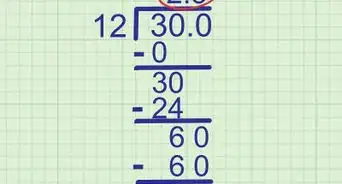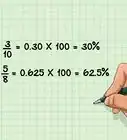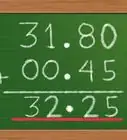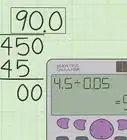wikiHow is a “wiki,” similar to Wikipedia, which means that many of our articles are co-written by multiple authors. To create this article, 46 people, some anonymous, worked to edit and improve it over time.
This article has been viewed 318,772 times.
Learn more...
Multiplying decimals may look tricky, but it's quite simple if you know how to multiply whole numbers. You can multiply numbers with decimals just as you would multiply whole numbers, as long as you remember to factor in the decimals at the end of the problem.[1] So how do you do it? Follow these steps to find out.
Steps
Practice Problems
-
1Line up the numbers on top of each other. If one number has more digits, you can put the number on top of the other. Let's say you're multiplying .43 by .06. Just line one number on top of the other, above the multiplication bar.[2]
-
2Multiply the numbers while ignoring the decimal points. Now, just multiply the numbers as you usually would in ordinary multiplication. Here's how you would multiply .43 and .06:[3]
- Start by multiplying the 6 in .06 by the 3 in .43 to get 18. Write "8" below the 6 and carry the 1 on top of the 4.
- Multiply the 6 by the 4 in .43 to get 24. Add 24 to the 1 that was on top of the 4 to get 25. The top row should read 258.
- When you start multiplying .43 by 0, you'll see that you only get 0, so there's no need to write anything down.
- The answer is 258 while you're ignoring the decimal points.
Advertisement -
3Count up all of the numbers of digits that are located at the right side of the decimal points of the factors. There are two numbers to the right of .43 (4 and 3), and there are two numbers to the right of .06 (0 and 6). Therefore, add 2 and 2 to get 4, the total amount of numbers to the right of both decimal points.[4]
-
4Move the decimal point of the whole number to the left that number of times. Since you counted 4 numbers, start with the decimal point at the end of the whole number 258, and move it over four times to the left starting to the right of the 8. You'll end up moving it one space past the 2 in 258.[5]
-
5Fill in the extra space with a zero. Since there's a blank space between the decimal point at the 2, fill it in with a zero. 258 becomes ".0258."[6]
-
6Check your work. If you want to make sure that .43 multiplied by .06 is indeed .0258, you can divide .0258 by .06 to make sure that you get .43. So, .0258 ÷ .06 = .43. You can check your work by dividing the answer by either number to get the other.[7] Therefore, you can divide .0258 by .43 to make sure you get .06. Does it work? .0258 ÷ .43 = .06. You're all done. .43 × .06 = .0258.
Community Q&A
-
QuestionHow would I find the product of a number and a number with a decimal? Example, 12.5 x 16.
 DonaganTop AnswererMultiply normally, then count the total number of places to the right of the decimal point (in this case, one). Place the decimal point in the product by counting one place to the left of the right-most digit.
DonaganTop AnswererMultiply normally, then count the total number of places to the right of the decimal point (in this case, one). Place the decimal point in the product by counting one place to the left of the right-most digit. -
QuestionHow do I multiply .67 by 100?
 Community AnswerFor each 0, move the decimal point one place to the right. So, .67 x 1 = .67, .67 x 10 = 6.7, .67 x 100 = 67.
Community AnswerFor each 0, move the decimal point one place to the right. So, .67 x 1 = .67, .67 x 10 = 6.7, .67 x 100 = 67. -
QuestionDo I have to round?
 Community AnswerNot necessarily. Though unless something depends on exact calculations, I find rounding helpful to make the number easier to think about.
Community AnswerNot necessarily. Though unless something depends on exact calculations, I find rounding helpful to make the number easier to think about.
Warnings
- Do not line up the decimals! Only align decimal points with addition and subtraction.⧼thumbs_response⧽
References
- ↑ https://www.cuemath.com/numbers/multiplying-decimals/
- ↑ http://www.math.com/school/subject1/lessons/S1U1L5GL.html
- ↑ https://www.mathsisfun.com/multiplying-decimals.html
- ↑ https://www.khanacademy.org/math/arithmetic/arith-decimals/arith-review-multiplying-decimals/v/more-intuition-on-multiplying-decimals
- ↑ http://www.coolmath.com/prealgebra/02-decimals/08-decimals-multiplying-01
- ↑ https://www.mathsisfun.com/multiplying-decimals.html
- ↑ https://www.cuemath.com/numbers/dividing-decimals/
About This Article
To multiply decimals, line up the numbers vertically so that the decimal points are in the same position. Then, multiply as normal and temporarily ignore the decimal points. Once you have your answer, count how many numbers in each of the original factors are to the right of the decimal point. For example, 0.02 is 2 spots to the right of the decimal point. If you were multiplying 0.02 × 0.4, the total number to the right of the decimal point is 3. Take this total number and then move the decimal point in your answer by that number of spots. If you move the decimal point past the first number of the answer, add zeros after the decimal point until you reach the numbers. If you want to learn how to check your answer to see if it's correct, keep reading the article!
